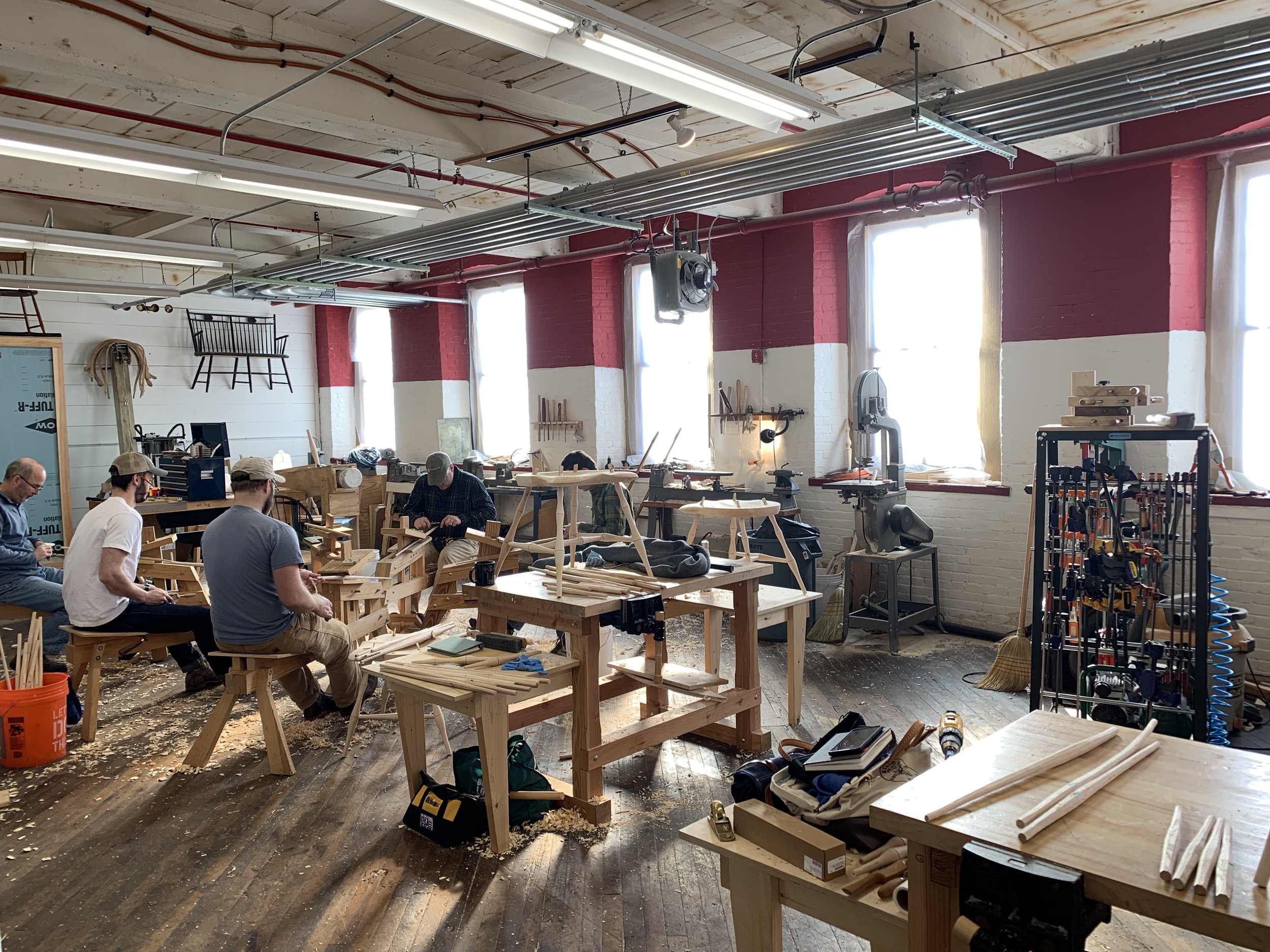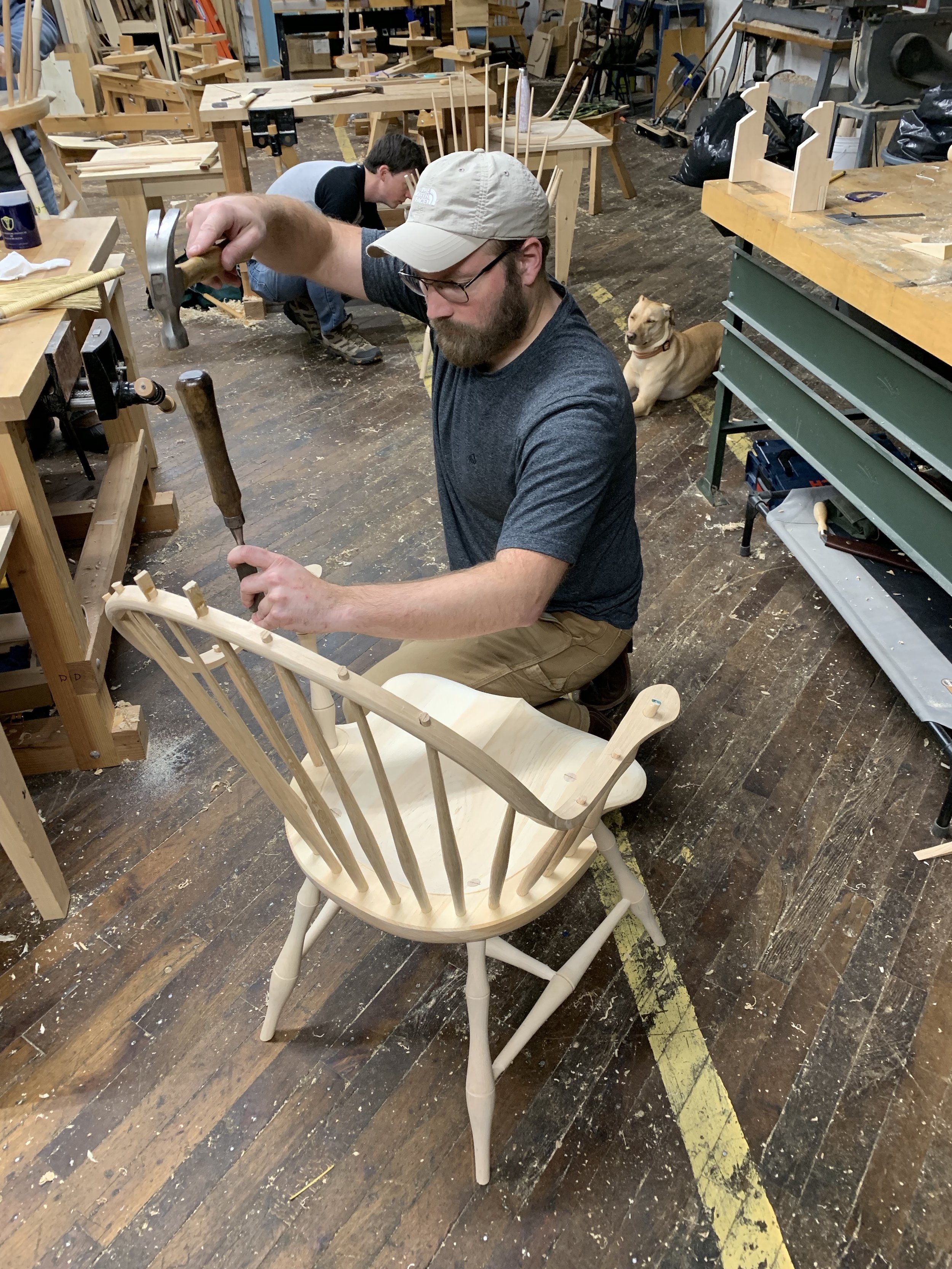Here the students are using a positioning jig to work out the rake and splay angles on the rear posts. This brings up an interesting topic. One of my goals is to have a process that delivers successful and controlled results with less than consistent bends. When I make my parts, I am fully human and while there is a level of consistency that I strive for, I’ve always been more interested in the process and ability to evolve the designs more than creating “perfect” parts. I also think of this as a service to my students because their parts at home might look a little different than mine but I still want them to be able to make a successful chair. Also, if they want to change the design or design their own, I want them to be able to. This jig that you see allows the design process to creep further into the construction process. By positioning the distance of the bottom of the posts at the known distance apart from seat pattern and clamping the tops at the desired distance for the crest, we can “play” with the rotation until a pleasing form is created and then extrapolate the rake and splay for drilling. All of our drilling numbers came out the same, but the rotation of the posts was determined by eye and everyone did a great job.
Here is the seat that I’m carving, as you can see, I’m having some fun with the shaping.











